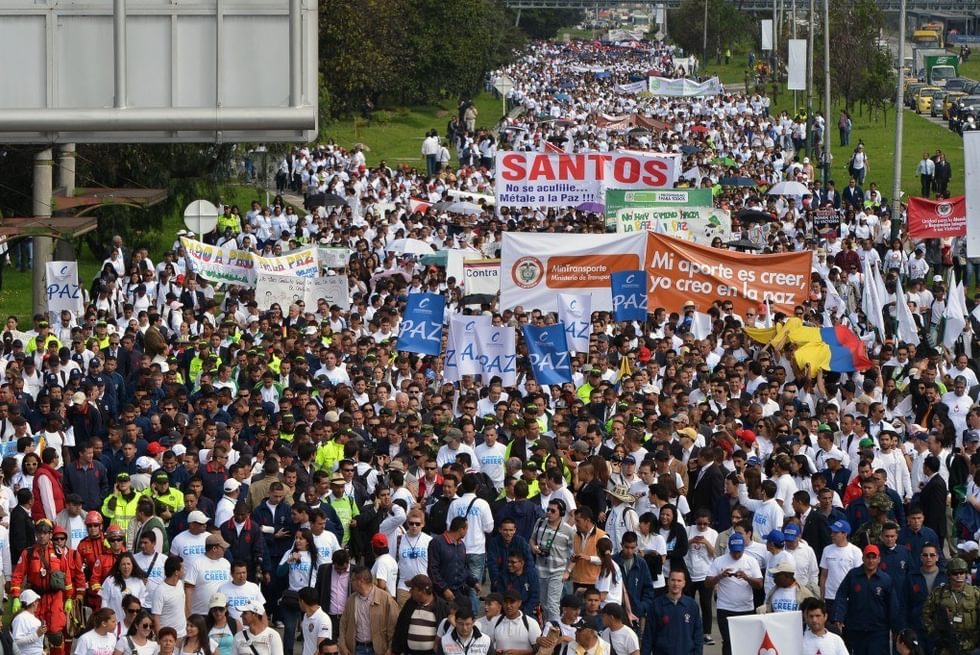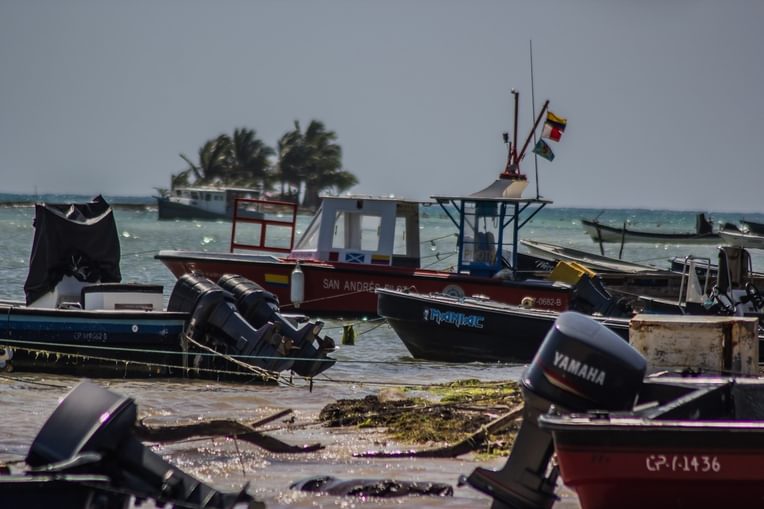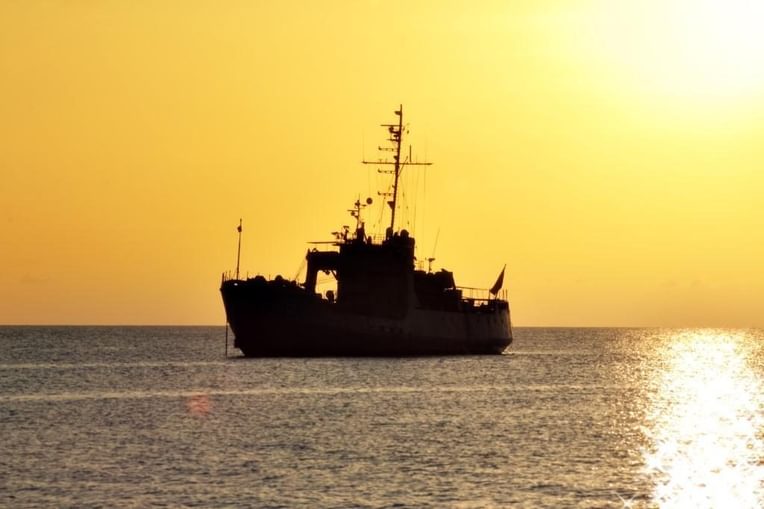Narcotráfico y Posconflicto en Colombia
From the Series: The Colombian Peace Process: A Possibility in Spite of Itself
From the Series: The Colombian Peace Process: A Possibility in Spite of Itself

Durante los últimos veinte años, el narcotráfico ha sido una de las prioridades de las políticas de seguridad de Estados Unidos y varios países latinoamericanos. Colombia, al estar situada en la esquina norte de Suramérica, con fronteras marítimas en el océano Pacífico y el mar Caribe, tiene una gran preocupación frente al lugar preponderante que el narcotráfico tiene en el desarrollo del conflicto armado, la seguridad nacional y la estabilidad regional. En los diálogos establecidos con la guerrilla de las Fuerzas Armadas Revolucionarias de Colombia (FARC), el Estado colombiano acordó enfrentar el narcotráfico haciendo énfasis en la sustitución de cultivos ilícitos, la prevención del consumo de drogas, y la lucha contra la producción y comercialización de drogas ilícitas. Sin embargo, poco o nada se ha tratado la íntima conexión que la diversificación de las rutas comerciales y de la actividad económica tienen con el fortalecimiento del narcotráfico.
A pesar de los esfuerzos estatales, vemos que el narcotráfico se fortalece en la medida que se diversifica. Esta situación responde a dos nuevos factores. El primero es el rol protagónico que las estructuras asociadas al paramilitarismo emergente tienen sobre esta actividad. Un caso que puede ilustrar esta situación es el del Archipiélago de San Andrés y Providencia. A pesar de que en las islas existe una larga trayectoria de realización de actividades ilícitas (sobre todo de contrabando de diferentes mercancías como azúcar, armas o gasolina), en el 2009 el narcotráfico y la violencia aumentaron a partir de la llegada de cabecillas paramilitares. Estos nuevos agentes irrumpieron con una fuerte oleada de violencia en medio de disputas por asegurar el encadenamiento comercial de esta ruta con Centroamérica y México. Así, de los acostumbrados “cruces” que realizaban los hombres isleños de mar, llevando drogas o gasolina en lanchas rápidas de un lado a otro, de repente las islas se llenaron de muertes, asesinatos selectivos, jóvenes armados y hombres torturados que rompieron la cotidianidad insular. Es decir, de un lugar de paso, las islas se convirtieron en un nodo estratégico en el que las redes del narcotráfico se disputan el monopolio del tránsito de mercancías ilícitas.
En segundo lugar, la persistencia y fortalecimiento del narcotráfico también responde a la diversificación de las actividades económicas ligadas a la producción y a la comercialización de drogas ilícitas. Una muestra de ello es Buenaventura (situado en el litoral Pacífico), donde desde 2008 las FARC se dedican a la producción de la hoja de coca aprovechando su control territorial rural, y grupos del paramilitarismo emergente como “La Empresa” o “Los Urabeños” se dedican a su comercialización gracias al control territorial urbano y marítimo que ejercen en los barrios de Bajamar situados en la isla de Cascajal. En este contexto, la minería de enclave extractivo ilegal, que reporta un crecimiento de más del ochenta por ciento en la región del Pacífico según el último censo minero realizado por el Ministerio de Minas y Energía, juega un papel preponderante. En muchos de los ríos de esta región (por ejemplo, en la zona rural de Buenaventura) se realiza minería ilegal de oro a gran escala, que es utilizada para financiar y lavar las actividades de los grupos armados ilegales. Esto demuestra cómo la minería es un poderoso elemento de diversificación de las mismas estructuras que controlan los cultivos y la comercialización de drogas ilícitas.
Estas situaciones demuestran que los esfuerzos que se realizan para resolver el problema de drogas ilícitas también deben hacer énfasis en el lugar que Colombia tiene como país intermediador. Esto significa que debe abordarse el desempeño del país como comercializador de diferentes mercancías (armas, insumos de procesamiento, dinero para lavado) gracias a su condición fronteriza y, sobre todo, marítima, ya que la tendencia hacia el desarrollo de actividades ilegales en ciertos lugares se relaciona con el aprovechamiento de circuitos y de redes establecidas a través del mar. Esto representa un reto para las políticas de interdicción existentes, debido a la vastedad del espacio marítimo del mar Caribe y del océano Pacífico. A ello hay que sumar las continuas innovaciones tecnológicas utilizadas para la comercialización de drogas, entre las que destacan la utilización de lanchas rápidas “go fast” y submarinos que pueden navegar desde la costa Pacífica hasta México en tres semanas transportando más de tres toneladas de droga.

Vemos entonces que los desafíos frente al narcotráfico y el posconflicto en Colombia requieren reconocer la diversidad de actores que en este momento entran en relación (guerrillas, paramilitarismo, delincuencia organizada), así como la diversificación de actividades productivas (cultivos ilícitos, minería ilegal de enclave extractivo) y lugares (espacios terrestres y marítimos) donde aquél se desarrolla. Es decir, algunos desafíos pasan por abordar la continuidad existente entre los actores armados vinculados al paramilitarismo y el narcotráfico, representada en la cada vez mayor presencia que tienen las “bacrim” (bandas criminales emergentes) en el país, y la manera en que éstas ejercen control en cada vez más territorios. En estas disputas territoriales, el mar tiene un papel protagónico como espacio por excelencia para la realización de las actividades de comercialización e intermediación.

Pero el desafío pasa también por reconocer que el narcotráfico no es un fenómeno externo a la sociedad. No es un mal que amenaza con destruir un ordenamiento social, sino que se encuentra imbricado profundamente en la sociedad y genera cambios en las estructuras de autoridad, en las formas de interacción entre los sujetos y las instituciones sociales, en los procesos de legitimación, en los patrones estéticos y de consumo, y sobre todo en el ordenamiento territorial. Estas situaciones nos permiten reflexionar y sugerir que tanto el estado como la sociedad colombiana deben enfrentar el narcotráfico abordando otras problemáticas como la desigualdad, la crisis de incorporación, y la manera como se gobiernan los no tan lejanos territorios “de frontera”.
During the past twenty years, drug trafficking has been one of the priorities of the security policies of the United States and several Latin American countries. Colombia, with its location in the northern corner of South America and shores on the Pacific Ocean and the Caribbean Sea, has been very preoccupied with the prevailing role that drug trafficking plays in the development of the armed conflict, of national security and regional stability. Currently, as part of the talks being held with the FARC guerrillas, the Colombian State agreed that it would emphasize, in its fight against the drug trade, illegal crop substitution, the prevention of drug consumption and their production and commercialization. However, the close connection between the diversification of commercial routes and economic activity and the strengthening effect this has on drug trafficking has barely been addressed.
Despite state efforts, we see drug trafficking become stronger as it diversifies. This situation is the result of two situations: First, the strong effect that structures associated with emerging paramilitarism have on this activity. An illustrative case study would be the situation of the San Andrés and Providencia Archipelago. Although the Archipelago has a long history of illicit activity (specially the smuggling of merchandise such as sugar, weapons, gasoline), in 2009 drug trafficking and violence increased with the arrival of paramilitary leaders. These new agents arrived on the scene with an intense wave of violence created by disputes to ensure that this route to Central America and Mexico be a part of the commercial chain. The island’s daily routines were disrupted and the habitual ocean crossings of the island dwellers, to transport drugs and gasoline from one side to the other, to become rife with deaths, selective murders, tortured men. In other words, the islands went from being a crossing point to a strategic nerve center where drug trafficking networks fought to monopolize the transit of illicit cargo.
Second, the diversification of the productive activities linked to production and commercialization also causes drug trafficking to persist and strengthen. Buenaventura, in the Pacific coast, is a clear example. Since 2008, the FARC have taken advantage of their control of rural territory to produce coca leaf, and emerging paramilitary groups such as “La Empresa” and “Los Urabeños” have taken advantage of their control of urban and maritime territory in the Bajamar neighborhoods, in Cascajal Island, to commercialize it. In this context, illegal extractive enclave mining, which has grown over ninety percent in the Pacific region according to the latest mining census conducted by the Ministry of Mines and Energy, plays a very significant role. In many of the region’s rivers (for example, in the rural area of Buenaventura), illegal gold mining is carried out on a grand scale and is used to finance and launder the activities of illegal armed groups. This shows the manner in which illegal mining is a powerful element for the diversification of the same structures that control the cultivation and commercialization of illicit drugs.
These situations demonstrate that efforts to solve the problem of illegal drugs should also emphasize Colombia’s position as an intermediary country. This means that the country’s role as the commercial channel for different types of merchandise (weapons, processing supplies, laundered money), due to its boundaries and particularly its maritime access, must be addressed since, in certain places, illegal activities tend to be connected to the advantages of ocean circuits and networks. This represents a challenge to existing interdiction policies because of the vastness of the marine territory both in the Caribbean Sea and the Pacific Ocean. We should also take into account the continuous technological innovation of the drug trade, for example, the use of “go fast” boats and submarines that can travel between the Pacific coast of Mexico in three weeks, transporting more than three tons of drugs.
As we can see, the challenges created by drug trafficking and post-conflict in Colombia, involve recognizing the diversity of the actors that are currently interacting (guerrillas, paramilitaries, organized crime), as well recognizing the diversification of productive activities (illicit crops, extractive enclave mining) and the places (terrestrial and marine spaces) where it is take place. That is, some of the challenges involve addressing the continuum that exists between paramilitarism’s armed actors and drug trafficking, which is represented in the incremental presence of the "Bacrim" in the country and the manner in which they exercise control over ever-increasing territory. In this case, ocean plays a very important role in these territorial disputes, as it is the quintessential space for the conduct of commerce and intermediation activities.
But, however, the challenge also involves recognizing that drug trafficking is not a phenomena external to society. It is not an evil that threatens to destroy social order, instead it is deeply rooted in society and generates changes in authority structures, the manner in which subjects interact with social institutions, legitimation processes, aesthetic and consumption patterns and, especially, in land use. These situations lead us to reflect that both the State and Colombian society must face drug trafficking by addressing other problems like inequality, the reintegration crisis and the ways in which the not so distant "frontier” territories are governed.